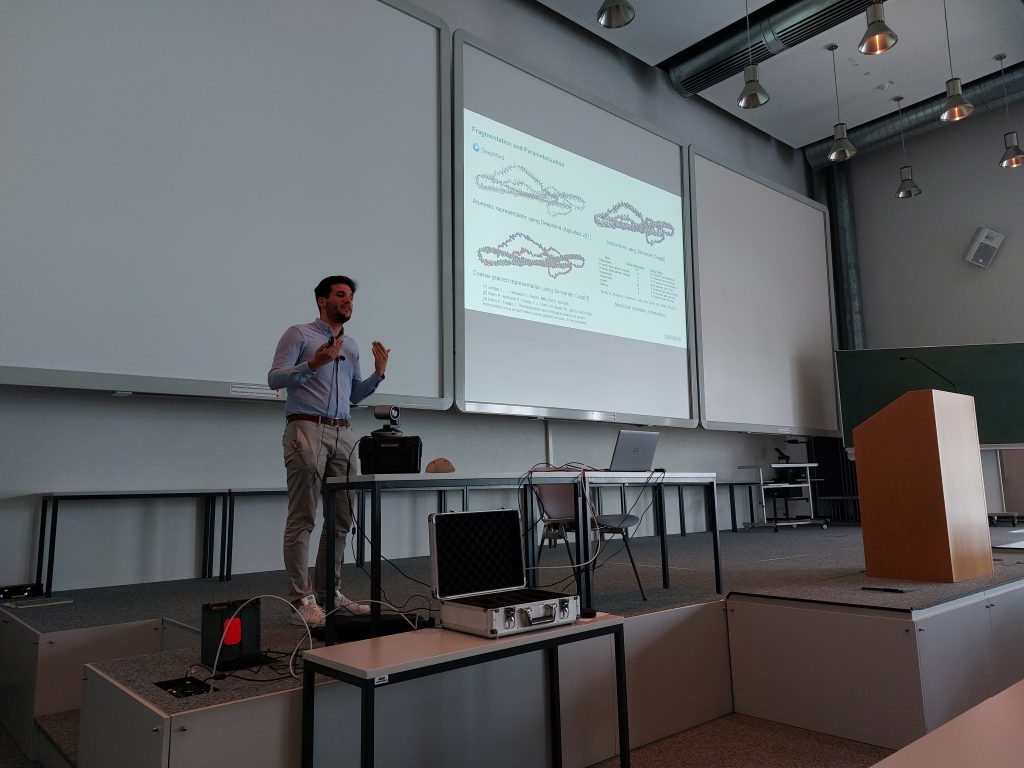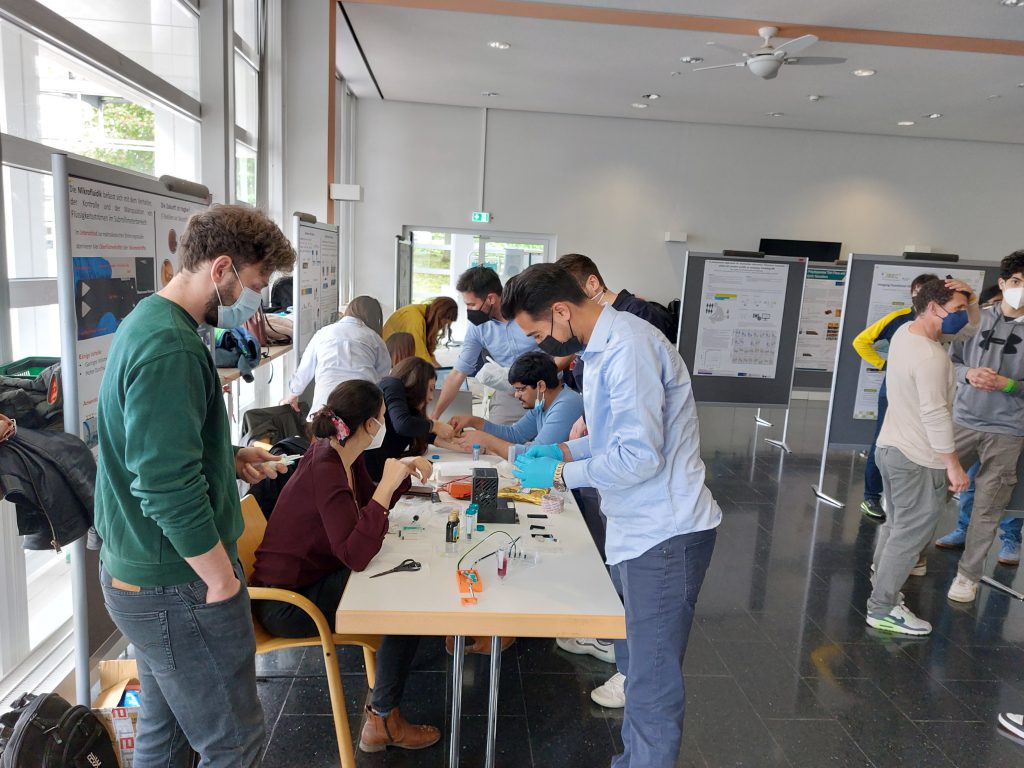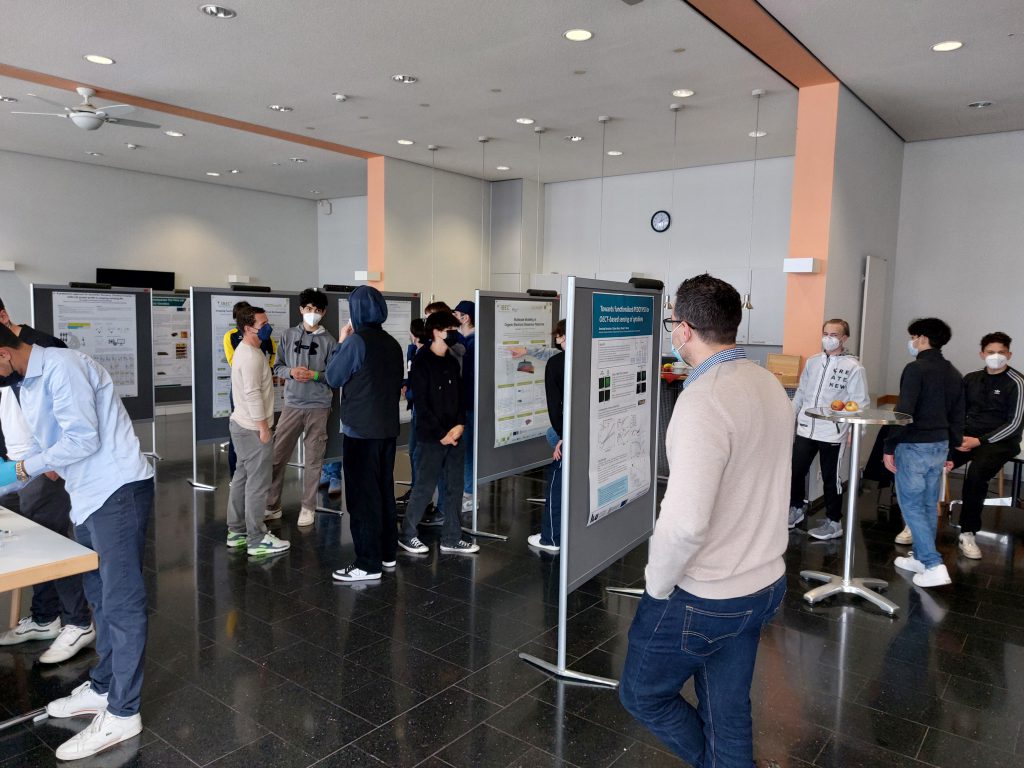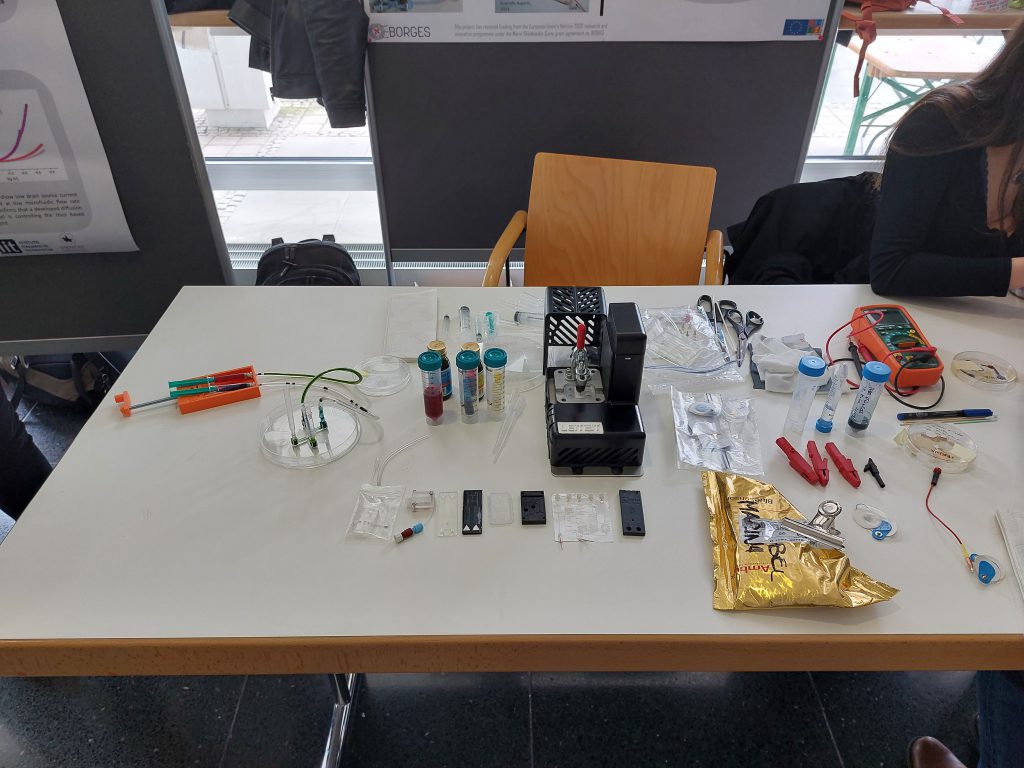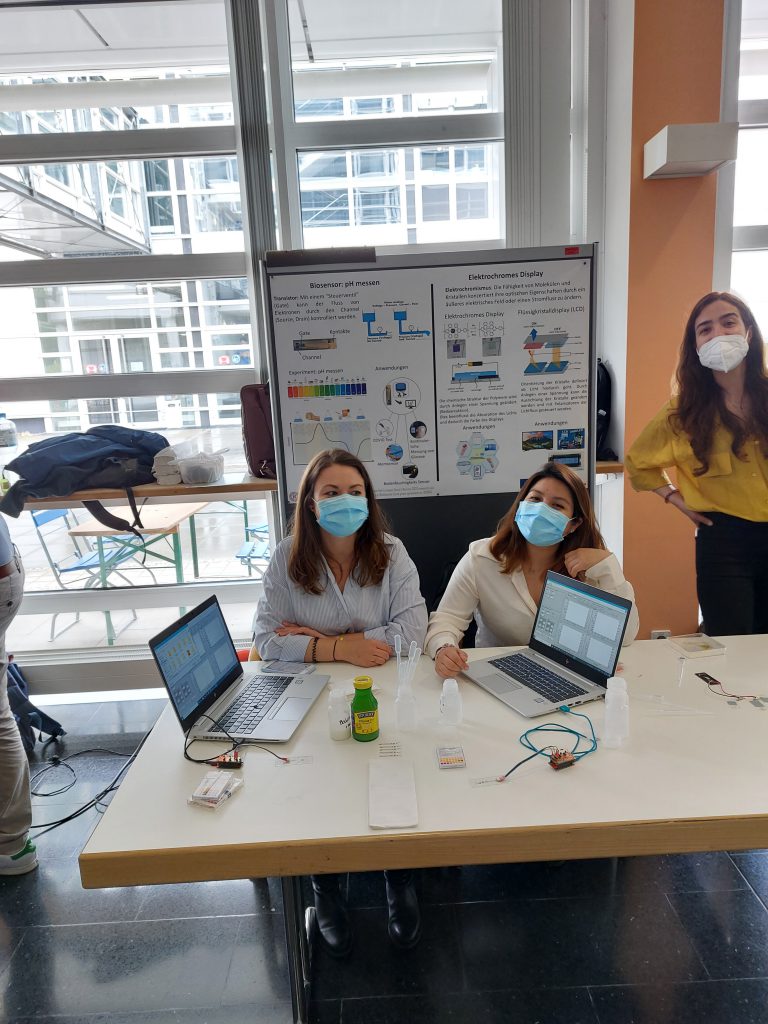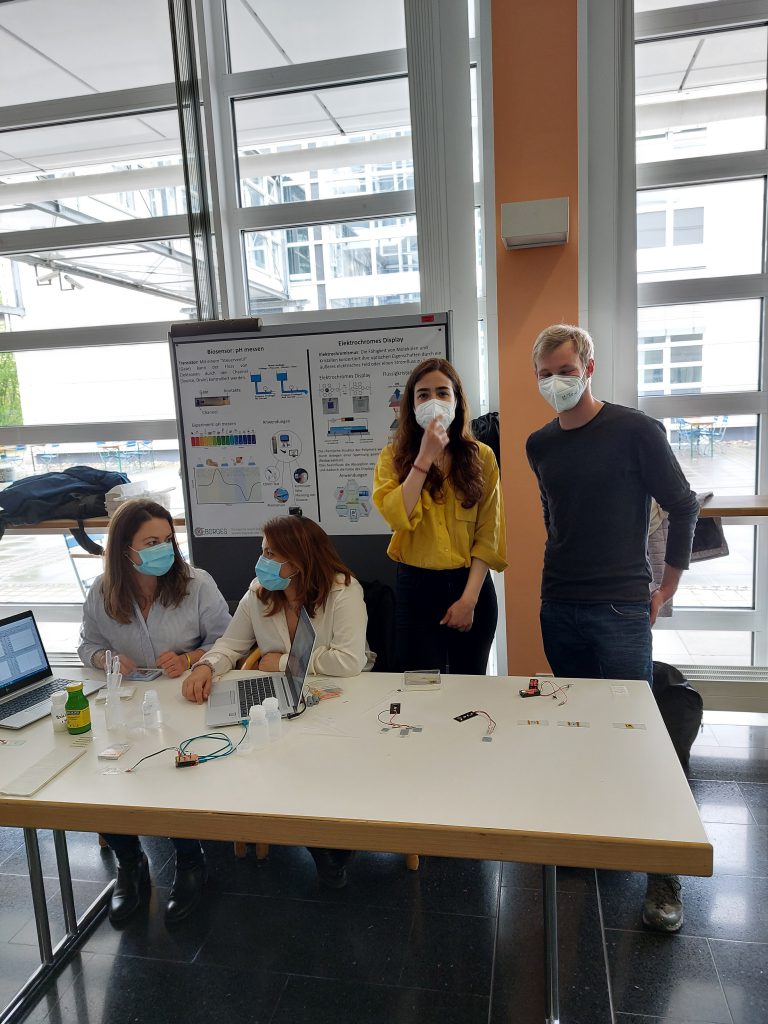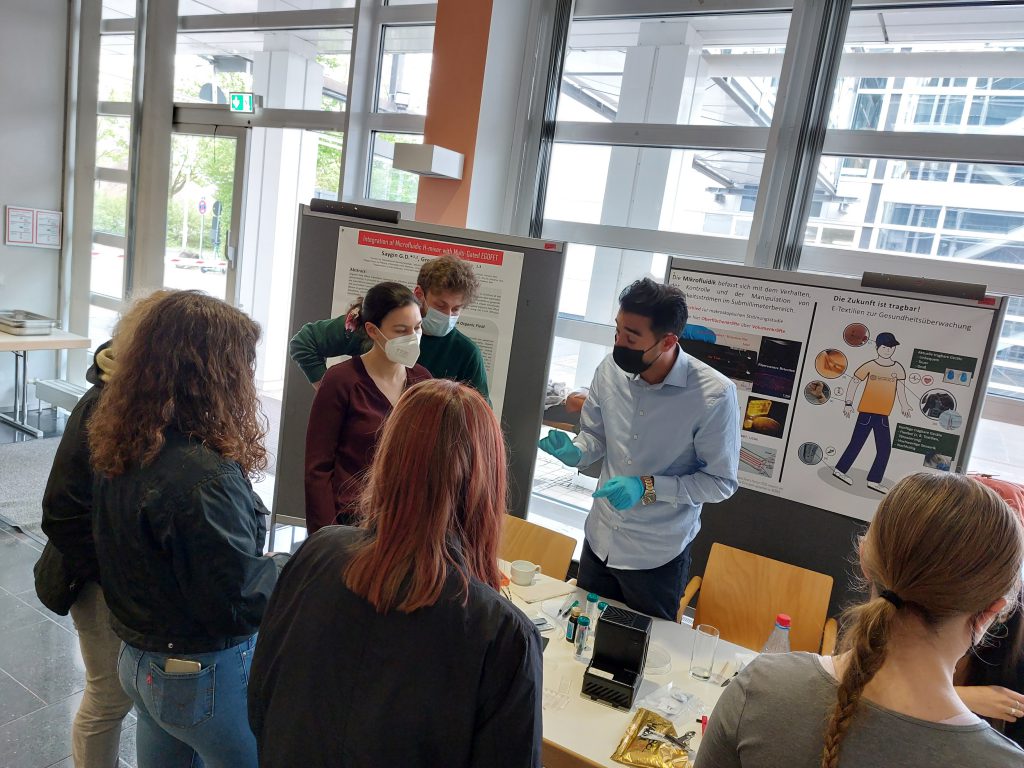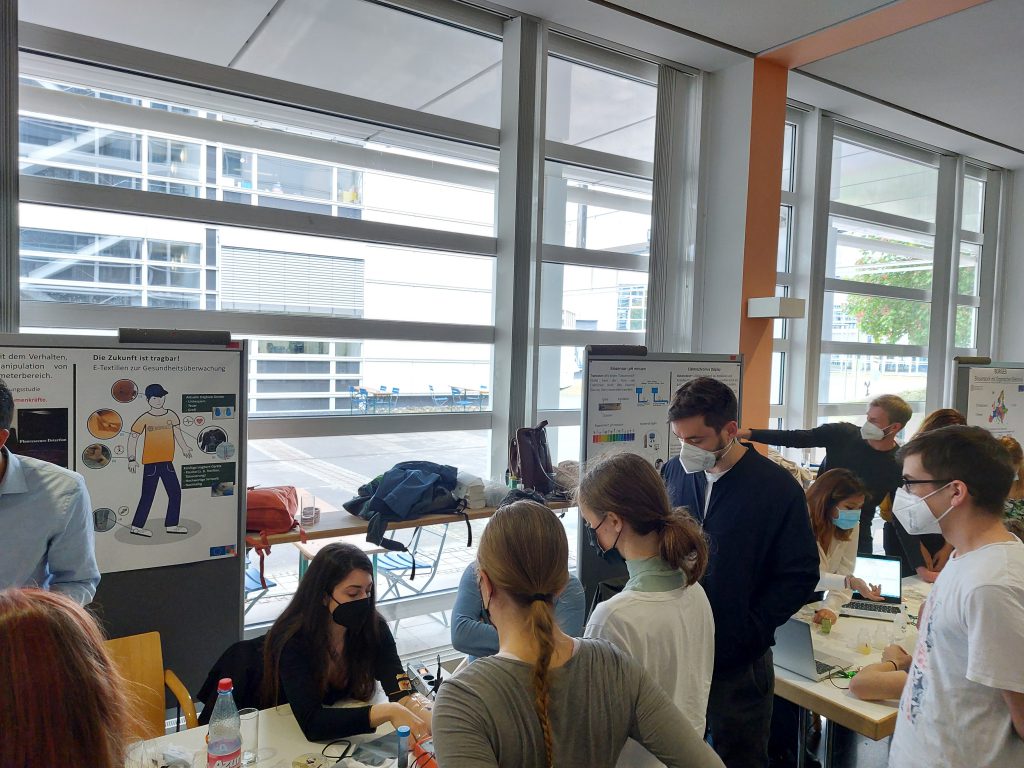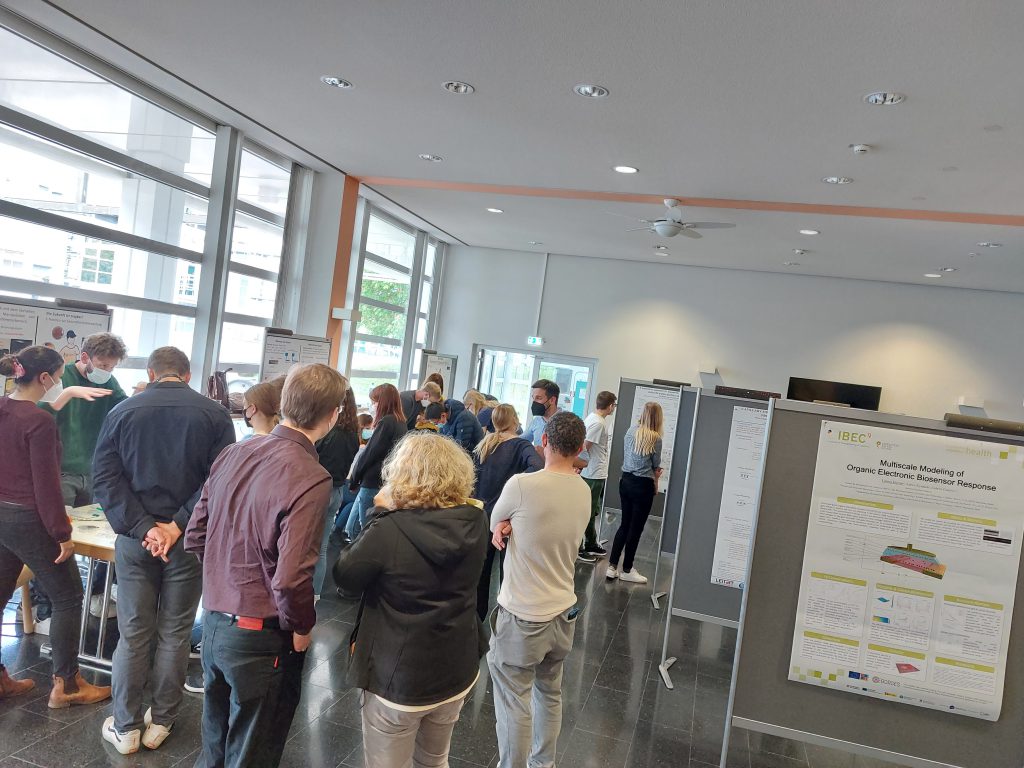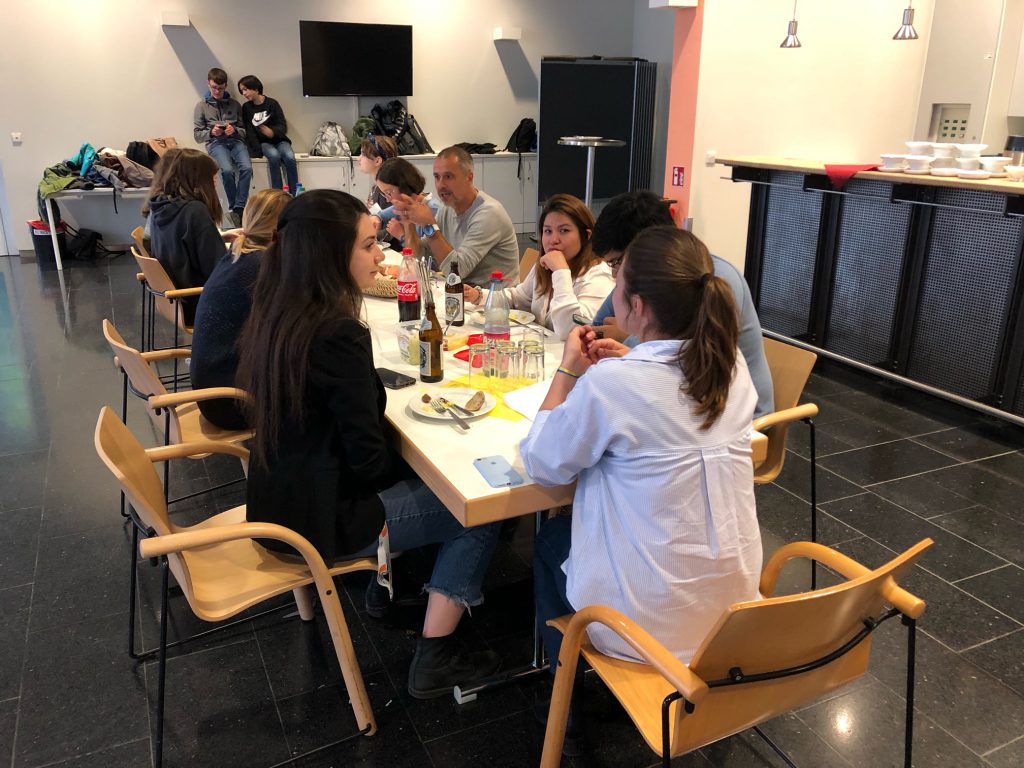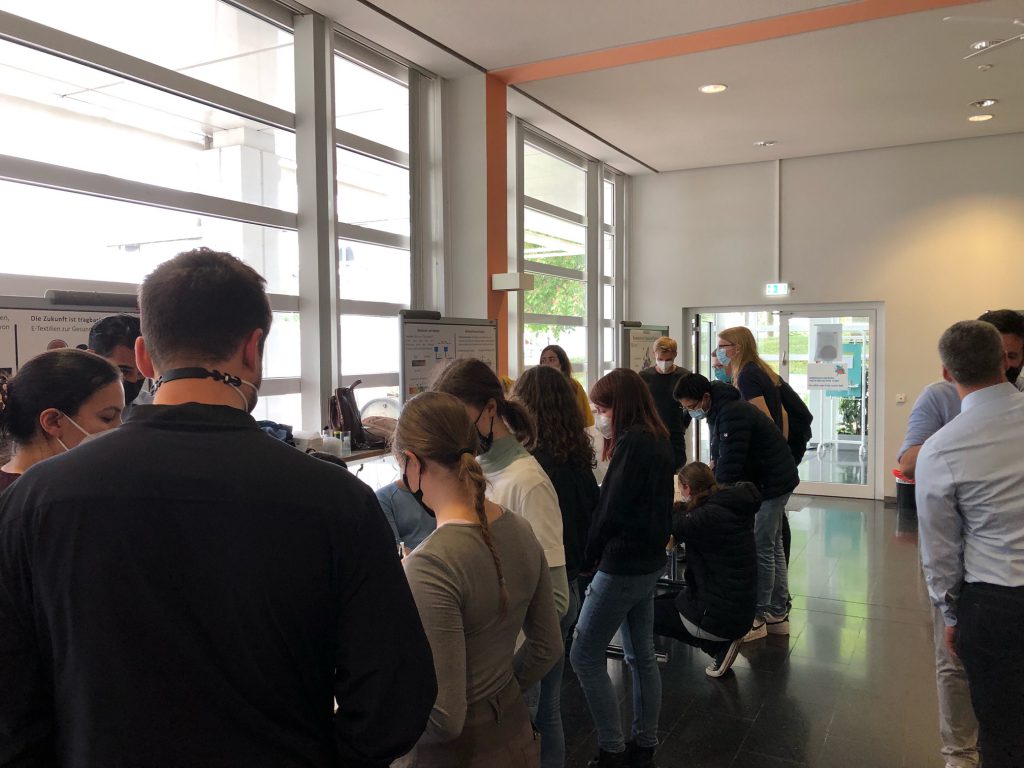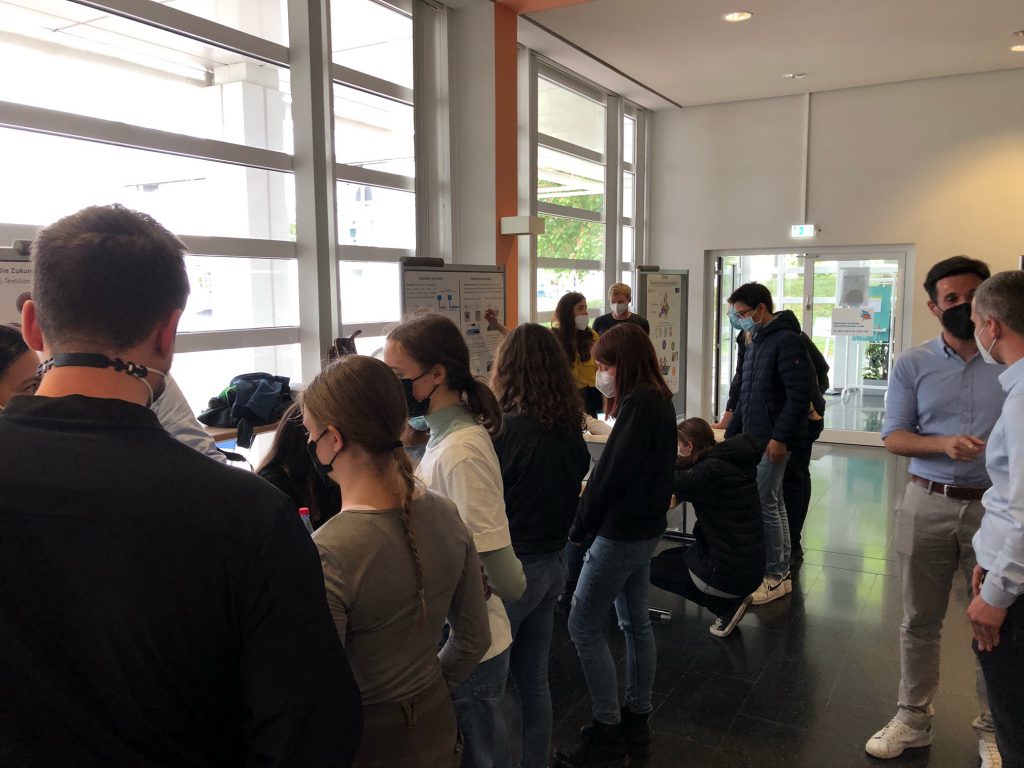April 26th, 2022, Mainz (Germany) – Max-Planck Institute for Polymer Research
On April 26th, 2022, at the Max-Planck Institute for Polymer Research, in Mainz (Germany), took place the BORGES CAMP: a full day event organized by the ESRs recruited within the project, aimed at the dual purpose of communicating science to experts in the field and to the general public.
During the morning, the ESRs organized a conference-style meeting where eminent scientists like Professor. Dr Michael Maskos, Professor. Dr. Boris Mizaikoff and Dr. Japser Michels gave inspiring lectures about biosensing devices and electronic materials.
During the same morning session two ESRs, Panagiotis Petris and Pamela Manco, presented their works having the unique opportunity to face with a specialized public.
In the afternoon the ESRs organized an outreaching public event: they introduced the Borges project and their personal works to two classes (ca. 40 students) from a German high school, showing them the importance and the versatility of organic electronics. During the demonstrations the students could learn about electrochromic display: this was done by showing how the optical properties of polymers can be changed by applying a voltage and how such feature can be used for displays.
Furthermore, a biosensing stand showed how semiconductors react differently to different pH or ion content (e.g., salinity): by using organic electronics in a transistor configuration (electronic component to control the current flow) these changes in the solution can be detected. For this series of experiments, different solutions were prepared, like salt water and lemon juice, and the students could try themselves to monitor the different responses of the device.
After an introduction to the important features of bioelectronics, the ESRs showed the students how this can be implemented in a wearable electronic device for health monitoring by showing the audience some cutaneous electrodes. The gold standard electrode and the novel polymeric ones that are fabricated within the consortium were compared showing the different features and advantages. The students could see how and why they are used to record signals on the skin.
Finally, in a last stand the ESRs showed how microfluidics could be used to move, collect and separate solutions in a precise fashion.
The young students reacted in a very enthusiastic way to such a stimulating “lesson”. The ESRs definitely proved to be able to transmit their knowledge in an innovative and stimulating way!
A special thank goes to Prof. Tanja Weil and her all staff at Max-Planck Institute for Polymer Research for their impressive work in helping the EARs organize the event and make it a great success!
